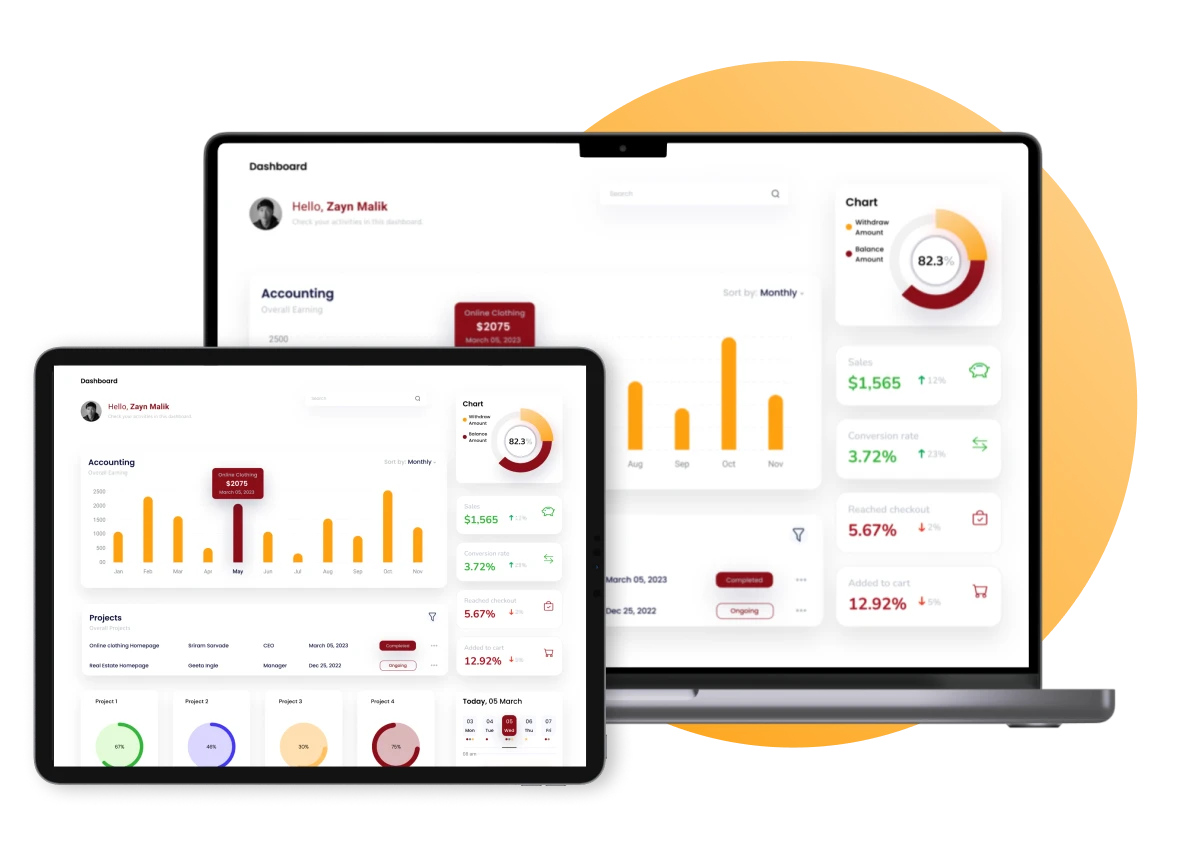Are you struggling to keep your trial balance error-free? Many business owners in sa ating bayan struggle to keep their account balance summary accurate. Just a small mistake between the debit and credit sides can lead to hours of searching for errors and adding stress to your day.
Imagine if you had a tool to make this process easier, catching mistakes and keeping your records accurate. Don’t let account balance problems hold your business back. Let’s dive into this article, where we will discuss everything around trial balance!
Key Takeaways
|
Table of Contents
What is a Trial Balance?

A trial balance summarizes account balances from a company’s general ledger, ensuring that debits match credits. Accountants compile this worksheet at the end of an accounting period to confirm entry accuracy.
Experts view an account balance summary as a tool for verifying that all financial transactions are recorded accurately. It acts as a checkpoint before preparing formal financial statements, allowing businesses to catch any discrepancies early.
Understanding the Account Balance in Accounting
Creating a balanced account is a vital step in the accounting process to ensure financial accuracy. Often supported by an accounting management System, this process helps organize and check accounts, minimizing errors.
Without a trial balance, companies cannot complete the accounting process or confirm if their debit and credit totals balance. An account balance summary plays a key role in helping companies review financial data accuracy and prepare reliable financial statements by ensuring all records align.
Also read: What are Adjusting Journal Entries in Accounting?
Functions of a Trial Balance
Trial balance is essential in accounting because it serves as a key checkpoint for accuracy and reliability in financial records, supporting multiple processes within financial management:
- Verifying Accuracy: This document verifies that all account entries balance by displaying debit and credit totals.
- Organizing Financial Information: By summarizing all account balances, financial data is organized into a single report, making tracking each account’s activity easier.
- Improving Transparency for Financial Reviews: This document enhances transparency, simplifies the review process for internal or external audits, and supports compliance needs.
These functions make the trial balance a foundational tool in accounting, ensuring a thorough review and reliable framework before preparing official financial statements.

Benefits of an Account Balance Summary
A trial balance offers important benefits that make accounting easier and more reliable, helping businesses manage finances smoothly and make better decisions. Here are the main benefits:
- Boosted Efficiency: By gathering all account balances in one document, this document speeds up the preparation of financial reports. This cuts down on time spent checking for errors by hand.
- Increased Confidence in Financial Reports: By catching mistakes early, balancing accounts helps ensure that financial reports truly reflect the company’s situation, building trust in the numbers.
- Clear Financial Overview: A well-prepared account balance summary gives a straightforward picture of the company’s finances, helping management track financial trends and spot issues early.
- Simplified Audit Process: Audits are easier to handle when accounts are organized and reviewed. This document gives auditors a clear, pre-checked record of transactions.
- Better Decision-Making: Having accurate, up-to-date information in this document helps leaders make wise business choices at the right time.
Overall, the trial balance makes accounting more reliable, giving companies the solid financial foundation they need for effective planning and growth.
Steps to Compile a Trial Balance
Compiling a trial balance is a step-by-step process to ensure all accounts are accurate and balanced.
- Calculate Account Balances: Begin by calculating the balance for each account listed in the general ledger.
- List Accounts: Arrange all accounts in the “Account Name” column, grouping them by type—such as assets, liabilities, capital, income, and expenses.
- Record Balances: Transfer each calculated balance into the appropriate column on the balance sheet, with debits on one side and credits on the other.
- Match Totals: Add up the debit and credit columns to confirm that the totals are equal. This ensures accuracy in the accounts.
Note: Accumulated depreciation may increase up to the asset’s original cost, after which the depreciation expense account is closed.
Types of Trial Balance
This document comes in three main types, each with a specific role in the accounting process. They are:
| Types | Definition |
|---|---|
| Unadjusted Trial Balance | This version is created after all transactions are posted to the general ledger, the preliminary check for errors. It allows accountants to spot and correct mistakes before adjustments are made. |
| Adjusted Trial Balance | Compiled after making necessary account adjustments, such as unearned revenue or accrued expenses, this trial balance reflects updated entries for a more accurate financial picture. |
| Post-Closing Trial Balance | This final version ensures the general ledger is ready for the next period. Created after closing entry are posted, it leaves only permanent accounts (like assets and liabilities) on the sheet. |
These three types of trial balances each play a key role in verifying accuracy throughout the accounting cycle, confirming that records stay in order before preparing financial statements.
Example of an Account Balance Summary
To illustrate, here’s a simple trial balance example:
This sample shows equal debit and credit totals, confirming the ledger’s accuracy.
Automate Trial Balance Creation with HashMicro’s Accounting Software

Implementing cloud accounting software Philippines makes it easy for businesses to manage trial balances. It automates many accounting tasks, saving you hours on data entry and reducing errors in your records. Designed to handle complex needs with BIR-accredited accounting that can quickly and efficiently simplify work for your finance team.
A sneak peek at some of its features are:
- Bank Integrations – Auto Reconciliation: This feature simplifies bank reconciliation by automatically matching transactions. This saves time and reduces the potential for manual errors.
- Multi-Level Analytics: Easily compare financial statements by project, branch, or other dimensions. This allows for a detailed analysis that supports more informed decision-making.
- Profit & Loss vs. Budget & Forecast: View real-time profit and loss alongside budget and forecast data, helping you monitor financial performance against targets.
- Automated Currency Update: Automatically update currency exchange rates, ensuring that your financial records remain accurate and up-to-date in multi-currency environments.
- Financial Statement with Period Comparison: Generate financial statements that compare performance across different periods. This gives clear insights into trends and growth over time.
With these powerful features, HashMicro’s Accounting Software automates and optimizes trial balance creation, helping businesses maintain accurate records, minimize errors, and gain deeper insights into their financial health.
Conclusion
The trial balance is a crucial tool for businesses, providing a snapshot of financial accuracy at any given time. Verifying that debit and credit entries align helps companies catch errors early, saving time and preventing costly mistakes in financial reporting.
HashMicro’s Accounting Software further simplifies this process by automating tasks and minimizing errors. With features like auto reconciliation and real-time financial tracking, this software offers businesses an efficient way to maintain accurate records. Try the free demo today!

Frequently Asked Questions
-
What is the main purpose of the trial balance?
The main purpose of this document is to confirm that debit and credit totals match. This ensures that financial records are accurate before preparing financial statements.
-
How is trial balance prepared?
To prepare for this document, list all account balances from the general ledger into debit and credit columns. Then, add each column to confirm that totals are equal.
-
What are the three rules of trial balance?
The three rules are: debits must equal credits, all account balances should be included, and totals should be balanced. These rules ensure accurate, balanced financial records before final reports.




































